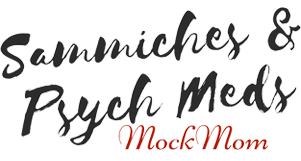Throughout my life, I’ve always wanted to be a published author. It’s just always been a goal of mine, for as early as I can remember, and I think that as a young girl, I didn’t even really know why, I just knew it to be something I was meant to do.
I was a bookworm from a very young age, too, collecting books and pouring over them, not just obsessing over the stories inside, but also finding peculiar pleasure even in the tactile element of holding a book itself in my hands.
No, no. You don’t understand the level.
I’m talking: feeling the texture of the cover, rubbing my thumb over the embossed title on a book’s spine, and opening its pages up wide, shoving my face inside, and taking a big breath of that delicious printed paper like it was the world’s last drop of sweet Tennessee honey.
Listen, I’ll admit I have a few oddities, but it’s not like I’m searching up Harry Potter animé porn on the dark web (this is a real thing), so I will say to you: though shalt not judge me.
Also, an important note about inclusivity for those dark web animé porn surfers: there is something for everyone. 🤷
As a young girl, I wasn’t sure what I wanted to publish, I just knew that I wanted a piece of that.
Not the Harry Potter animé porn part.
I wanted to claim my place on someone’s bookshelf.
I wanted someone to hold my words in their hands and be taken away from the present and into the story I created for them.
I wanted someone to sniff MY pages. 😏
Fast forward about 20 years and I had my story. The story I would craft and share with the world would be a secret family story that I’d just discovered about my dad, his brother, and my grandmother, and it’s an important example of other stories just like it that other families experienced as part of the fallout from WWII.
In my signature “meta” fashion (some may also call it perfectionist or even good, old fashioned procrastination): I lose myself in research, and do the thing I want to do before I do it. 🤔
Like a pre-project for a project.
This very important story - the one about my dad - needs to be birthed, but I decided that it would not be my first book. I needed to go through the writing/editing/publishing process with another story first.
To learn the steps and kind-of work out the kinks of how the writing and publishing life cycle works.
That’s where this blog post in your hot little hands comes in.
Let me be clear: getting my book - the one I wrote for this experiment, called You Should Write A Book! True Tales of An Unstable Life, into my hands and the hands of others did not take just 30 days. There are a bunch of steps to take after the book is written.
I’ll walk you through THAT entire process in another post.
This post is just about the writing process I used to crank this puppy out in 30 days.
I should also mention that You Should Write A Book! is not literary genius. It’s not going to go down as any kind of classic, nor will it be - God willing - made into a movie.
It’s filled with what my son says are “a bunch of two dollar words,” and he’s not wrong.
But this book’s purpose wasn’t to create a masterful story.
It was to learn the process.
And to tell some funny stories along the way.
Here’s how I wrote a book in 30 days
Committed To NaNoWriMo
NaNoWriMo is an organization as well as a month-long event that exists to help create a sense of community and encouragement for writers. In a nutshell.
There’s more to it, for sure, but those are the nuts and bolts, along with the goal, which is to crank out 50,000 words within the month of November.
It runs November 1-30 and there are community events to help you plant your butt in a chair and get your words written.
I signed up on their website and looked up local groups on Facebook so I’d be notified if there were events in my area, and there were - and are - tons, but I never attended any.
Signing up is free, although there are perks for donating (I got a t-shirt for donating).
From there, I just took my word count goal of 50,000 words and divided that out by the number of days I knew I would be able to write (I took off a few weekend days and the entire Thanksgiving weekend), which meant I had a daily word count goal of around 2,000.
Decided On The Topic
I had been writing personal anecdotes and funny family stories from my childhood for this blog, and the feedback I got was all positive - from people saying they thought the posts were funny and relatable to people saying they actually found them helpful and valuable. Bless.
I didn’t want this book to be a huge time commitment, in terms of drawing out for the typical year or two that book writing can take. I decided I could quickly expound on the stories I’d already put out there in my blog and in guest posts around the internet, and round them out a bit.
Outlined/Organized
The first step in the process was to brainstorm all the topics and stories I would include in the book. I set a timer for maybe 15 minutes or something like that and just started rapid-firing items onto the blank side of lined index cards.
I got this idea from Pat Flynn, who illustrates this technique right here, but, where I used index cards, he uses Post It notes.
I combined his technique with another one that I found along the way, which uses index cards, because of a future step, which we’ll get to in a sec.
Next, I grouped the cards into categories, and those would be my chapters.
Then I flipped each card over to the lined side and bullet-pointed a few key points to support the main idea I’d put on the blank side.
This became my “outline.”
created The Content
My book, You Should Write A Book! is more of a compilation of short stories - more “essays” than “story,” so it was a little easier to put together than a novel that has a true beginning, middle, and end.
I took my index card “outline” and typed them out on my computer, filling in the content (adding more words) to bring those bullet-pointed items to life.
The interesting thing that happened during this process was that the more I wrote, the more memories would be triggered of other tidbits from my life that I would add to the book.
Then I just wrote my balls off until the end of the month, and at the end of the day on November 30th I took a giant, theatrical bow for myself as my fingers danced across the keyboard to the (only-in-my-head) music that was the sound of my word count hitting 50,000.
The Tools
There are a few different tools for capturing the words that make up your book, most notably Microsoft Word, Google Docs, and - the software I use - Scrivener, an app designed specifically for writers.
After the skeleton framework was typed into Scrivener, and because my book was basically a compilation of essays, I could easily click and drag sections around to get them ordered in a way that made the most sense.
And That Was That!
With the book written, the next part of the life cycle would start: editing, formatting, the administrative paperwork for the book, cover design, proofing, and publishing.
I’ll share all the ins and outs of those steps in a separate post, but I’m answering some frequently asked questions below in the meantime.
FAQ’s
How many pages is a book with 50,000 words?
It depends on the font size (the size of the text you use), the amount of front matter, the spacing, size of the book itself (will it be 6x9”? Will it be 5x8”?) These are just a handful of the different variables that determine a book’s length.
How long did it take you to get the book in your hands, from start to finish?
Exactly six months. It took me five months and 20 days to go from brainstorming topics and ideas, all the way to getting the publish date of April 20th on my book. Then another 10 days to get the shipment of books in my hands, making it a nice, even six months.
It can be done faster than this, or it can take longer. It took me this long because I did everything myself. I hired an editor, but didn’t get high enough quality work, although it was fast. I hired a cover designer, but again - didn’t fork out enough money to get a highly qualified one, and ended up redoing all their work. The cover you see now is my own design.
Did you self publish or traditionally publish?
A hybrid of the two. I established my own publishing company, Gingerspark Press, and ran the book through there. I’ll share in a future post the pros and cons of traditional versus self publishing, and the benefits of using this hybrid method.
Did you hire an agent?
I did not, but I will for the book I’m currently writing.
Will you publish your next book the same way as this one?
Possibly, but that is not the goal. My plan for my next book is to hire an agent and publish with a traditional publishing house.
The reason is because - as much as I am aware that the publishing industry has changed and that independent publishing and self publishing is accepted as more mainstream these days - I want a traditional publishing house’s stamp of approval. Getting the support from one of The Big Guys would give me the ultimate validation I’ve always sought in my career, and even as a hobbyist writer.
What would you do differently if you could do it over again?
I would invest more money into editing and cover design, and I would hire out the marketing. Or just come up with - and stick to - a longer-term marketing plan. After just a month or so of marketing my book, I had moved on to my next thing, and my book didn’t get the marketing support it should have, although I wasn’t too beat up about that, since - again - the book wasn’t about the book.
The book was about learning the process. And it worked!










